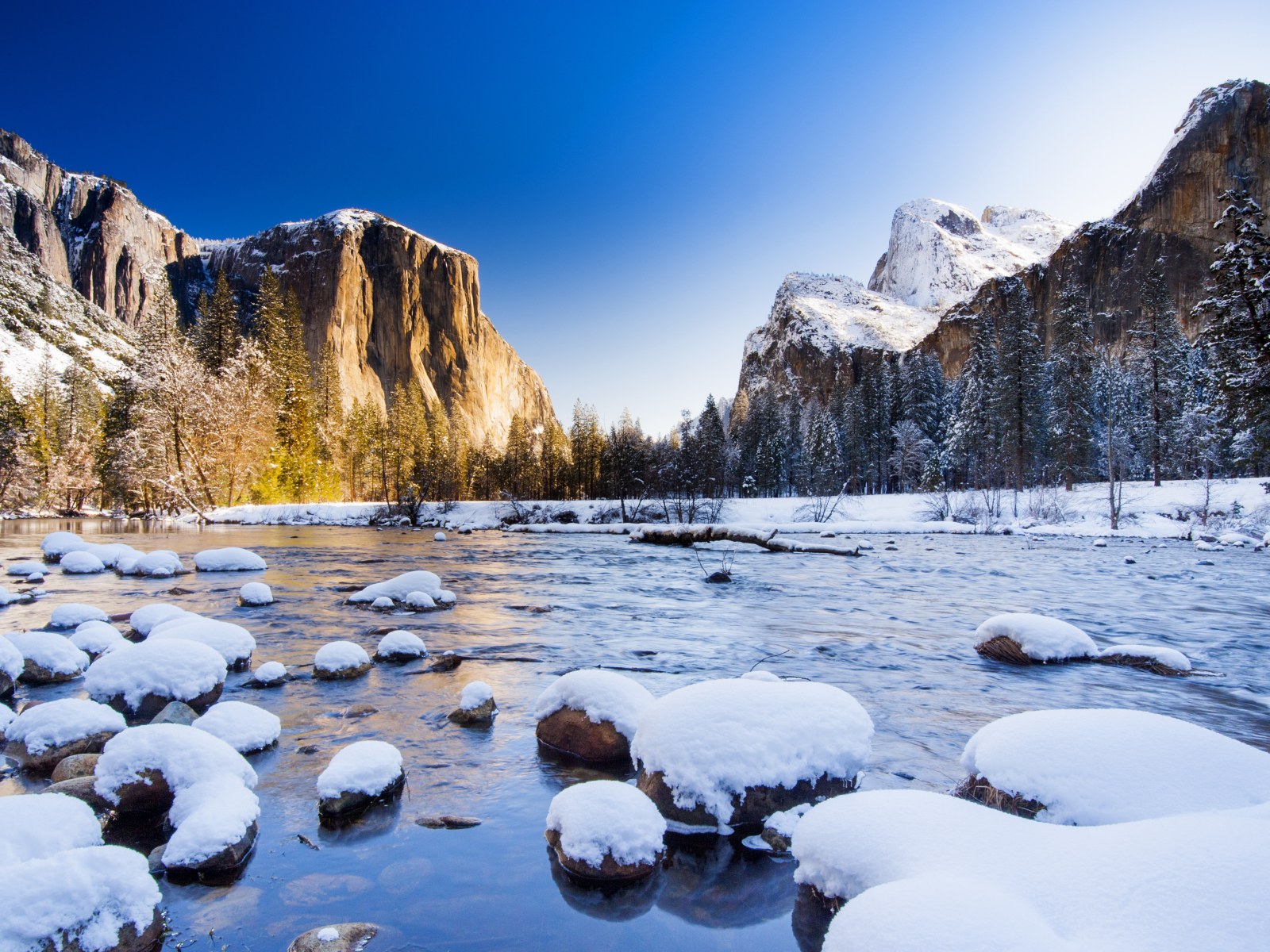California’s Top 10 National Parks: Life near the Natural Wonders
California is not only a place of innovation and technology, but also a land of amazing nature. It holds the record among all US states for their number of parks. Each of these parks is characterized by unique natural beauty: majestic mountains, ancient forests, desert landscapes and coastal areas. Moving to California offers a unique opportunity to live near these natural wonders, giving you access to breathtaking views and outdoor activities. In this article, we’ll highlight the top 10 national parks in California that everyone should visit.
1. Yosemite National Park
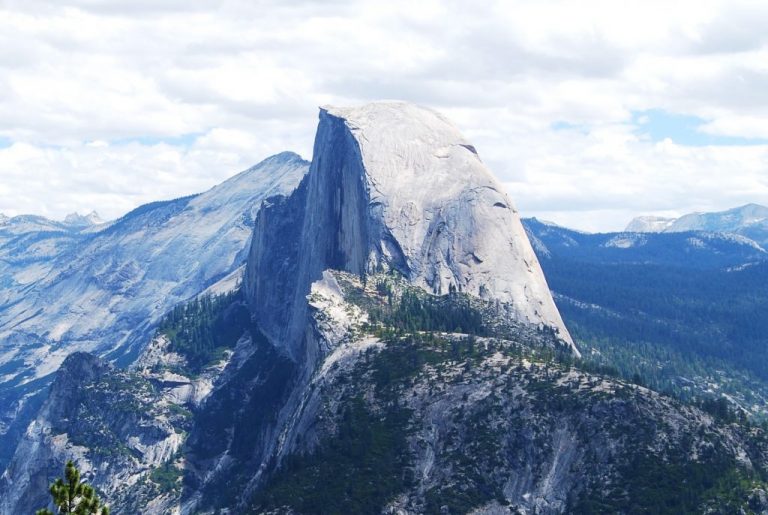
Location: Central California, in the Sierra Nevada Mountains.
Features: Waterfalls, granite cliffs, giant sequoias.
Yosemite National Park is one of the most famous and visited natural places in the United States and the world. Located in the Sierra Nevada Mountains of central California, this park stretches over 3,000 km² and attracts millions of tourists every year with its stunning landscapes, granite cliffs, majestic waterfalls and ancient forests. Yosemite is not only a natural wonder, but also a place with a rich history of conservation and an important place for American culture.
The park is known for its diverse geography, ranging from flowering meadows and dense forests to rocky canyons and high peaks. Highlights include:
- Granite Rocks: The most famous are El Capitan and Half Dome. These massive monoliths attract climbers from all over the world.
- Waterfalls: Yosemite Falls are some of the tallest and most beautiful waterfalls in North America. The most famous is Yosemite Falls, which has three levels and reaches a height of over 740 meters.
- Yosemite Valley: It is a picturesque gorge overlooking granite mountains and waterfalls. Many popular hiking trails and campgrounds are located here.
- Forests of Giant Sequoias: These ancient trees, some of which are over 3,000 years old, are some of the most impressive members of Yosemite’s flora. One of the most popular places to see them is Mariposa Grove.
Yosemite is a Mecca for mountaineers. The most famous rock, El Capitan, rises 900 meters above the Yosemite Valley and is considered one of the most difficult routes in the world. Also, Half Dome Rock, with its distinctive shape, is a popular destination for more experienced hikers.
The best time to visit the falls is in the spring, when the melting snow creates powerful streams of water. Yosemite Falls, one of the highest waterfalls in North America, is the park’s main natural attraction. Other waterfalls, such as Bridalveil Fall and Vernal Falls, also attract tourists for their beauty and accessibility.
Yosemite is home to several groves of giant sequoias, but the most famous is the Mariposa Grove. These huge trees, which are some of the oldest and tallest on Earth, create an amazing sight. Some of them have names, such as the Grisley Giant tree, which is impressive in size and thousands of years old.
Yosemite offers an extensive network of trekking trails for outdoor enthusiasts. Among the most popular routes are the Huff Dome summit hike, which requires a special permit, and the Mist Trail, which leads to Vernal and Nevada Falls. For less experienced hikers, shorter but scenic routes are available, such as hiking through Yosemite Valley or visiting groves of sequoias.
Yosemite is home to over 400 species of animals, including bears, deer, foxes and many species of birds. Bears are a symbol of the park, and hikers are advised to be careful, especially in campgrounds, to avoid attracting wildlife. In summer and spring, you can find flowering plants such as lupines and poppies that cover the meadows with bright colors.
For those who want to spend time outdoors, Yosemite offers many campgrounds. Some are located in the valley itself, while others are remote, allowing you to enjoy the tranquility and beauty of nature. Upper Pines Campground is one of the most popular campgrounds in Yosemite Valley.
Yosemite is open year-round, and in the winter you can ski and snowboard on the slopes of Badger Pass Ski Resort, which is California’s oldest ski resort.
The park is open year-round, but each season offers its own specialties. In the spring, you can enjoy the full-flowing waterfalls and flowering meadows. Summer is a time for hiking, camping and mountaineering. In the fall, the park takes on a calmer atmosphere with a pleasant coolness and golden hues on the trees. In the winter, Yosemite is covered in snow and it’s the perfect time for skiing and snow hiking.
Yosemite National Park is one of the most breathtaking places on Earth, where the majesty of nature is revealed in all its glory. Whether you’re a hiker, rock climber or just want to enjoy the unique natural scenery, this park is an unforgettable experience. Living near such a natural wonder is an opportunity to immerse yourself in an atmosphere of majesty and tranquility on a daily basis.
2. Sequoia and Kings Canyon National Parks
Location: East Central California.
Features: The tallest trees in the world – giant sequoias, deep canyons.
Sequoia National Park and Kings Canyon National Park are two neighboring parks in California’s Sierra Nevada Mountains that together form a protected area where nature shows off its majesty. They are known for their giant sequoias, deep canyons, rushing rivers and unique mountain scenery. These parks offer exceptional opportunities for hiking, camping, mountaineering, and nature observation.
2.1 Sequoia National Park
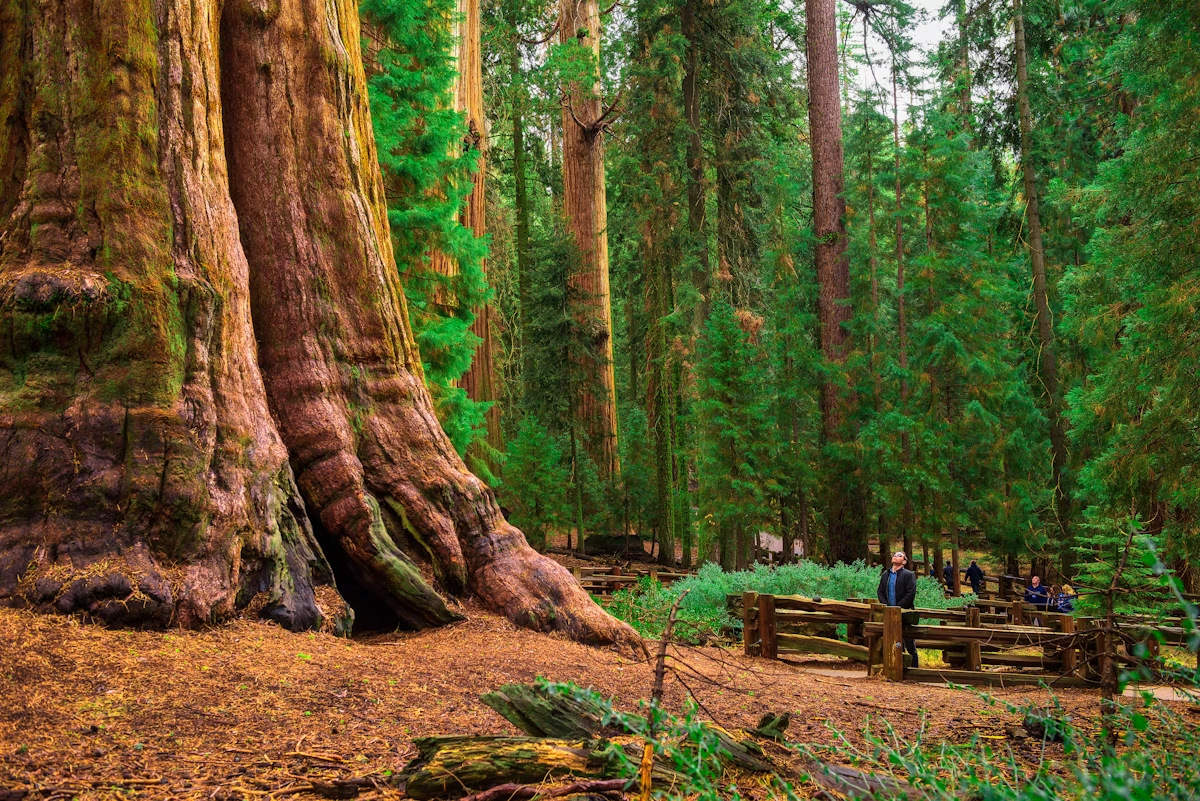
Location: East Central California, approximately 320 kilometers from Los Angeles.
Features: Giant sequoia trees, Mount Whitney, the highest peak in the continental United States, underground caves.
Sequoia Park was established in 1890 to protect the world’s largest trees, the Giant Sequoia trees. These are ancient trees that can reach more than 80 meters in height and live for more than 3000 years. The main attraction of the park is the General Sherman tree, which is considered the largest tree on the planet in terms of wood volume. Its height is about 84 meters and it is over 2,200 years old.
Highlights of Sequoia Park
- General Sherman: This tree is the true symbol of the park. It is not the tallest tree in the world, but it is the most massive in volume. This amazing tree is a living witness to thousands of years of history.
- Giant Forest: This is a grove with many giant sequoias, including the General Sherman. The forest has several walking trails that allow visitors to stroll among these colossal trees.
- Giant Forest Museum: For those interested in the history and nature of the region, the museum offers information about the sequoias, the park’s flora and fauna, and the ecology of these unique forests.
- Mount Whitney: With an elevation of 4,421 meters, it is the highest point in the continental United States. Climbing the mountain requires experience and training, but hikers who make it will enjoy stunning views of the surrounding mountains.
- Moro Rock: It is a granite rock with a height of about 75 meters, from the top of which you can enjoy stunning views of the valley and mountain ranges. A staircase leads to the top where you can admire the views of the majestic Sierra Nevada scenery.
- Crystal Cave: Sequoia Park is also known for its underground wonders. Crystal Cave is a vast network of underground passages and halls with impressive stalactites and stalagmites. Tours are offered in the summer, making a visit to the cave an unforgettable adventure.
2.2 Kings Canyon National Park

Location: North of Sequoia Park, about 240 km from Fresno.
Features: Deep canyons, rushing rivers, alpine meadows, pine forests.
Kings Canyon is a natural gem known for its canyons, which are comparable in depth to the Grand Canyon. This park is considered one of the most picturesque mountainous regions in California and attracts tourists with its wild landscapes, powerful rivers and a variety of flora and fauna.
Kings Canyon Park highlights
- Kings Canyon One of the deepest canyons in North America, this scenic section of the park offers stunning mountain and river views. The gorge cut by the Kings River is considered one of the most beautiful natural landscapes in California.
- Kings River: The turbulent waters of the Kings River create spectacular waterfalls and allow for water sports such as whitewater rafting. This is an ideal destination for those seeking adventure and outdoor activities.
- General Grant Grove: This grove is home to one of the most famous trees, the General Grant, the second largest tree in the world after the General Sherman. It was named the “National Christmas Tree” in 1926 and symbolizes the grandeur of nature.
- Cedar Grove trails: This is one of the quietest and most secluded spots in the park, where you can enjoy peaceful walks among majestic trees and crystal clear rivers. There are convenient hiking trails as well as campgrounds.
- Alpine Meadows and Lakes: At an altitude of over 2000 meters, you can see incredible alpine meadows with flowering field plants and mountain lakes such as Rae Lakes. This region is especially popular with multi-day hikers.
Sequoia Park and Kings Canyon are renowned for their biodiversity. In addition to the famous sequoias, many species of trees can be found here, including pines, spruces, and fir trees. Colorful wildflowers such as lupines bloom in the alpine meadows, as well as ferns and mosses that cover the forest floor.
Fauna includes bears, deer, coyotes, mountain lions, squirrels, and many species of birds. Bears are frequent visitors to the parks, so hikers are advised to be cautious and properly store food to avoid attracting the animals.
Both parks offer many hiking trails that range in difficulty from short walks to multi-day hikes. Some of the most popular trails include:
- Giant Forest Trail: An easy trail that passes among giant sequoias, including a General Sherman tree.
- Rae Lakes Loop: A popular multi-day trail in Kings Canyon Park that passes through alpine meadows and mountain lakes.
- Mist Falls Trail: One of the most scenic trails in Kings Canyon Park that leads to a magnificent waterfall.
Both parks offer a variety of campgrounds, from simple to more equipped. Lodgepole Campground in Sequoia Park and Cedar Grove Campground in Kings Canyon are popular with campers due to their convenient location and access to major trails.
With their granite peaks, Sequoia and Kings Canyon Parks offer plenty of opportunities for rock climbing and mountaineering. Climbing Mt. Whitney is one of the most famous challenges for experienced climbers.
In the winter, the parks offer skiing, snowmobiling and snowboarding opportunities. Monte Ski Resort in Sequoia Park offers trails for skiers and snowboarders of all levels.
The parks peak hiking season is in the summer, when all trails are open and most of the hiking facilities are accessible. Spring and fall are quieter, and are ideal times for those who want to avoid large crowds. In the winter, roads to some areas may be closed due to snow, but this time of year is ideal for winter sports.
3. Death Valley National Park
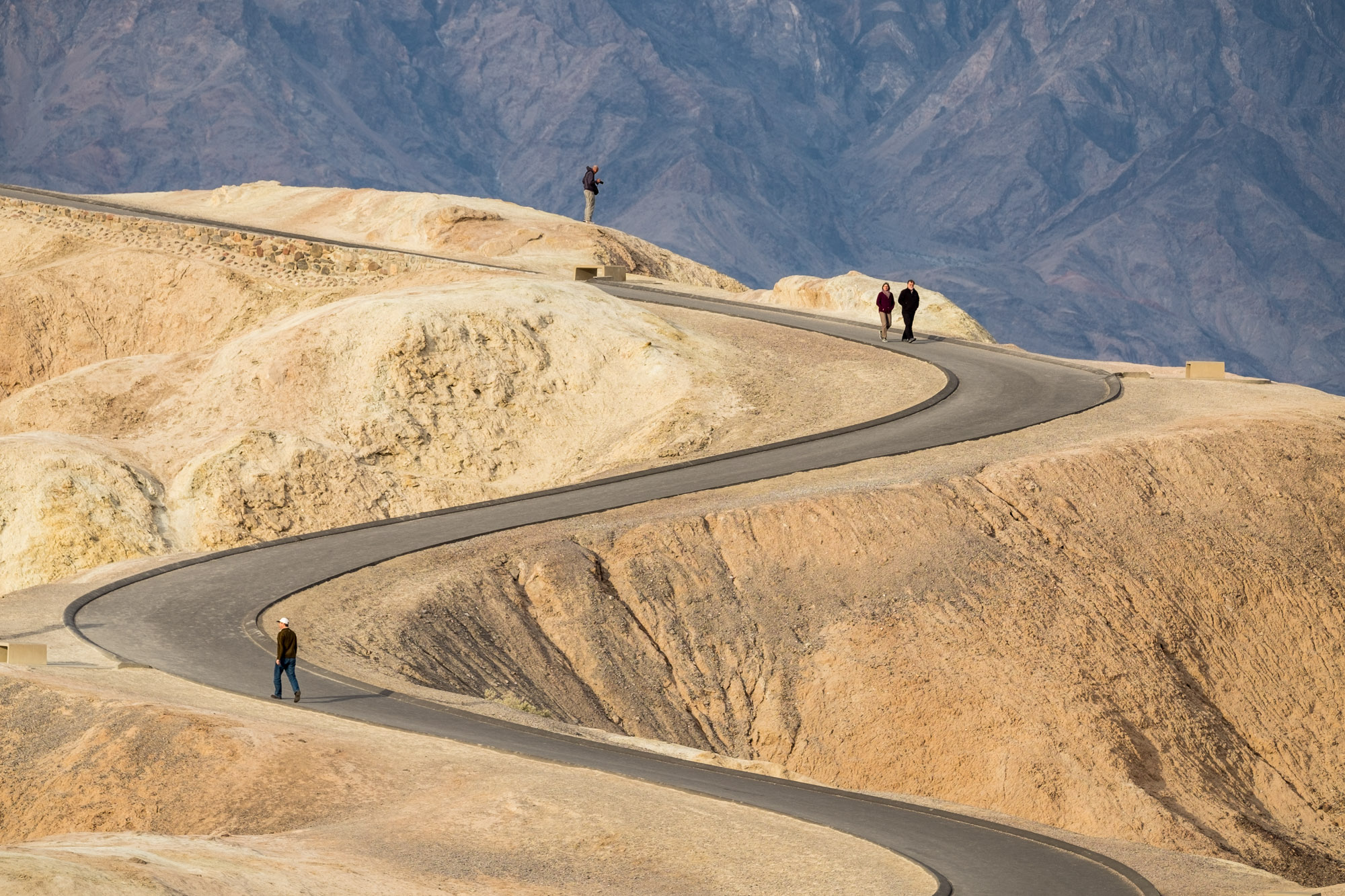
Location: Eastern California, on the border with Nevada.
Features: The hottest place on Earth, desert landscapes, salt flats.
Death Valley National Park is one of the most unique and breathtaking places on Earth. Located in eastern California, along the Nevada border, this national park encompasses a vast expanse of desert landscape and mountain ranges, stretching over 13,650 km². Death Valley is known for its extreme temperatures, breathtaking views, geologic features, and rich history. This park, despite its intimidating name, is full of life and natural wonders.
Death Valley is famous for its extreme weather conditions and is considered the hottest place on Earth. In summer, temperatures can rise above +50°C, and the record for the highest temperature on the planet was recorded here – +56.7°C in 1913. In winter, however, temperatures in the park can drop to a chilly +4-5°C at night, especially at higher elevations.
Despite such extreme conditions, Death Valley attracts tourists with its unique landscape and amazing natural phenomena.
Death Valley is located within the Great Basin and is surrounded by the Panamint and Amargosa Mountains. This valley is 86 meters below sea level, making it the lowest point in North America. The park offers a huge variety of natural landscapes, from sand dunes and salt flats to flowering desert valleys and mountain ranges.
Death Valley’s major natural attractions
- Badwater Basin: This is the lowest point in North America, located 86 meters below sea level. The vast salt flat that stretches for kilometers creates ethereal scenery. In summer, you can see salt crystals evaporating here, forming bizarre patterns on the surface.
- Dante’s View: One of the park’s most picturesque observation decks offers a panoramic view of the entire valley. This location is at an elevation of about 1,600 feet, allowing hikers to enjoy views of the salt flats and mountain ranges.
- Mesquite Flat Sand Dunes: These dunes are some of the most popular spots for photographers and tourists. Their gentle waves that rise and fall in the wind create ideal conditions for hiking and sand surfing.
- Titus Canyon: A scenic gorge that winds through winding mountain roads and narrow canyons, it is a popular destination for road trips and hiking trails.
- Artist’s Palette: This section of the mountain is named for the unique palette of colors created by the mineral deposits. Here you can see amazing shades of pink, green and gold colors that vary depending on the time of day and lighting.
- Racetrack Playa: This unique dried up lake surface is famous for its mysterious phenomenon of “crawling stones”. Over the course of many years, rocks move across the surface of the dried lake, leaving traces on the ground behind them. This is believed to be due to a combination of strong winds and the ice that covers the surface in winter.
- Zabriskie Point: One of Death Valley’s most famous lookout points. This spot is known for its eroded scenery with views of undulating ridges and canyons that are especially spectacular at sunrise and sunset.
Death Valley has a rich history, beginning with the Native American Timbisha-Shoshoni tribes that have inhabited the region for thousands of years. These tribes knew how to survive in extreme conditions, utilizing natural resources to hunt, gather food, and build homes. Today, some of their traditions and cultural sites are preserved in the park.
Death Valley also played an important role in U.S. history during the Gold Rush era. Many adventurers crossed this rugged terrain in search of gold and other minerals. Traces of mining camps and abandoned towns can still be found in the park.
Despite the extreme conditions, Death Valley is home to a variety of flora and fauna that has adapted to the harsh desert climate. In the spring, when the rains fall, the park is transformed as wildflowers begin to bloom in the desert, transforming the harsh landscape into a vibrant carpet of colors.
- Desert Blossoms: In years with sufficient rainfall, the phenomenon of “super blooms” can be observed in the spring, when thousands of desert flowers start blooming at the same time. This turns the valley into a colorful natural wonder that attracts tourists from all over the world.
- Animals: Death Valley is home to many species of animals such as desert foxes, coyotes, rabbits and reptiles. It is also home to several species of birds that find refuge in shady oases and along dried rivers.
Death Valley offers many trekking routes for nature lovers and outdoor enthusiasts. Some of the most popular trails are:
- Golden Canyon Trail: One of the most accessible trails that passes through narrow canyons and leads to amazing views of Zabriskie Point.
- Badwater Basin Salt Flats: Walking along the salt flats is a unique experience, especially at sunset when the sun creates vivid contrasts on the white-washed surface.
- Dante’s View Hike: This route offers magnificent views of Death Valley from an elevation of almost 1700 meters. It is one of the best spots to watch the sunrise or sunset.
Death Valley is a great place for road trips. Here you can drive famous routes such as:
- Artist’s Drive: This short route passes through colorful landscapes, creating unforgettable views of rocky hills and desert plains.
- Scotty’s Castle: This old building, built in the 1920s, is a historic landmark and an example of unusual architecture in the desert.
Death Valley offers several campgrounds that are open year round. Furnace Creek Campground is one of the most popular campgrounds and offers all the amenities you need, including showers and picnic tables. A night in the desert under the stars is an unforgettable experience, especially because of the dark skies that are perfect for astronomical observations.
The best time to visit Death Valley is during the winter and spring months (November through April), when temperatures are much lower and you can enjoy hiking and sightseeing without the sweltering heat. In the summer, the park becomes less accessible due to the extreme heat, but even at this time of year, you can find fun things to do
4. Lassen Volcanic National Park

Location: Northern California.
Features: Active volcanoes, hot springs, boiling mud lakes.
Lassen Volcanic National Park is a unique place in northern California that is a true paradise for nature, geology and outdoor enthusiasts. The park covers an area of over 400 km² and is located in the Cascade Volcanic Range. It is famous for its active geothermal phenomena, including hot springs, sulfur gases and boiling mud pots, as well as active and extinct volcanoes.
Lassen Volcanic National Park was established in 1916 after the 1914-1917 eruption of Lassen Peak Volcano, which was one of the largest volcanic events in North America in the twentieth century. The volcanoes of the Lassen region are four major forms of volcanoes: shield volcanoes, composite (stratovolcanoes), cinder cones, and crater volcanoes.
- Lassen Peak: It is one of the largest shield volcanoes on the planet, rising 3,187 meters above sea level. Lassen Peak volcano is a majestic testament to recent geologic activity. Despite its recent eruption, today it is a safe place for tourists, with the possibility of climbing to the top for stunning views of the surrounding scenery.
- Volcanicity of the park: In addition to Lassen Peak, the park contains numerous cinder cones and volcanic formations. One of the most interesting is Cinder Cone, a cinder cone formed by an eruption several hundred years ago. From the top of Cinder Cone, the view of the lava flows and pumice fields surrounding it is spectacular.
Geothermal activity is another unique feature of Lassen-Volcanic. Here you will find boiling mud pots, hot springs and fumaroles (places where steam and gasses escape from underground), making this park a living museum of volcanic activity.
The main geothermal areas are
- Bumpass Hell: This is the largest geothermal zone in the park where visitors can observe boiling sulfur springs and mud pools. Wooden decks allow you to walk through this bubbling area and observe geysers and fumaroles from a distance. Bumpass Hell was named after Kendell Bumpass, an explorer who accidentally fell into one of the boiling springs in the 19th century.
- Boiling Springs Lake: One of the largest thermal lakes in the world, with water heated to boiling temperatures. Its gray-green surface is smoky and its shores are covered with mineral deposits, creating a unique landscape.
- Sulphur Works: This geothermal area is located near the southern entrance to the park and is easily accessible to visitors. Here you can observe hot vapor outlets and gurgling mud pots saturated with sulfur gasses, which give the site a distinctive odor.
Despite the harsh conditions and volcanic activity, the Lassen-Volcanic National Park is home to a variety of flora and fauna that have adapted to these unusual conditions.
- Vegetation: The park is covered with dense forests of pines, firs and junipers that contrast with the volcanic fields. During the summer months, there are many wildflowers that bloom amidst the volcanic landscape, adding colorful spots to the harsh nature.
- Wildlife: The park is home to a variety of wildlife including deer, bears, coyotes, and many species of birds such as hawks and woodpeckers. With a variety of ecosystems, from alpine meadows to forests and bodies of water, the park is a haven for many animals.
Lassen-Volcanic National Park offers a variety of outdoor activities including hiking, camping, wildlife watching and mountaineering.
The main hiking trails are
- Lassen Peak Trail: This is one of the most popular climbs in the park. The route is about 8 kilometers long and climbs to the top of Lassen Volcano, offering stunning panoramic views of the surrounding mountains and valleys.
- Bumpass Hell Trail: An easily accessible trail that leads to the largest geothermal area in the park. It’s about a 4.8km round trip walk through beautiful scenery leading to bubbling hot springs.
- Cinder Cone Trail: This is a more challenging trail that climbs to the top of the cinder cone, offering spectacular views of the lava fields and surrounding lakes such as Juniper Lake and Butte Lake.
- Kings Creek Falls Trail: The 4.8 km route leads to a beautiful waterfall that is particularly impressive in spring and summer when the river is at its peak flow.
There are several campgrounds within Lassen-Volcanic Park, including Manzanita Lake Campground and Southwest Walk-in Campground. These campgrounds are stocked with basic amenities and provide the perfect setting to spend the night among nature, watching the stars and enjoying the quiet of the volcanic landscape.
In winter, the Lassen-Volcanic Park becomes a destination for winter sports such as ski touring and snowshoeing. The park is covered in snow, creating ideal conditions for skiing and snowboarding.
Lassen-Volcanic National Park is famous for its dark skies, making it one of the best places in California for astronomical observations. With its distance from major cities and lack of light pollution, the night sky here is truly spectacular. During the summer, the park hosts special stargazing events where visitors can see meteor showers, the Milky Way, and other cosmic phenomena.
Lassen-Volcanic National Park has not only natural but also historical significance. Before the arrival of Europeans, the region was inhabited by Native Americans of the Maidu tribe, who used the area for hunting and fishing. Europeans began to develop the region in the 19th century, when trade routes were established and resource extraction was organized. The eruption of Lassen Peak in the early 20th century attracted the attention of geologists and tourists from around the world, which eventually led to the creation of the national park.
The best time to visit Lassen-Volcanic National Park is during the summer months (June through September), when most of the trails and geothermal areas are accessible. In winter, the park becomes a popular destination for winter sports, but many trails may be closed due to snow.
Lassen-Volcanic National Park is an amazing place to see and study the power of nature in its most active and vibrant form. Volcanoes, hot springs, unique geothermal phenomena and picturesque landscapes make this park an unforgettable destination
5. Joshua Tree National Park
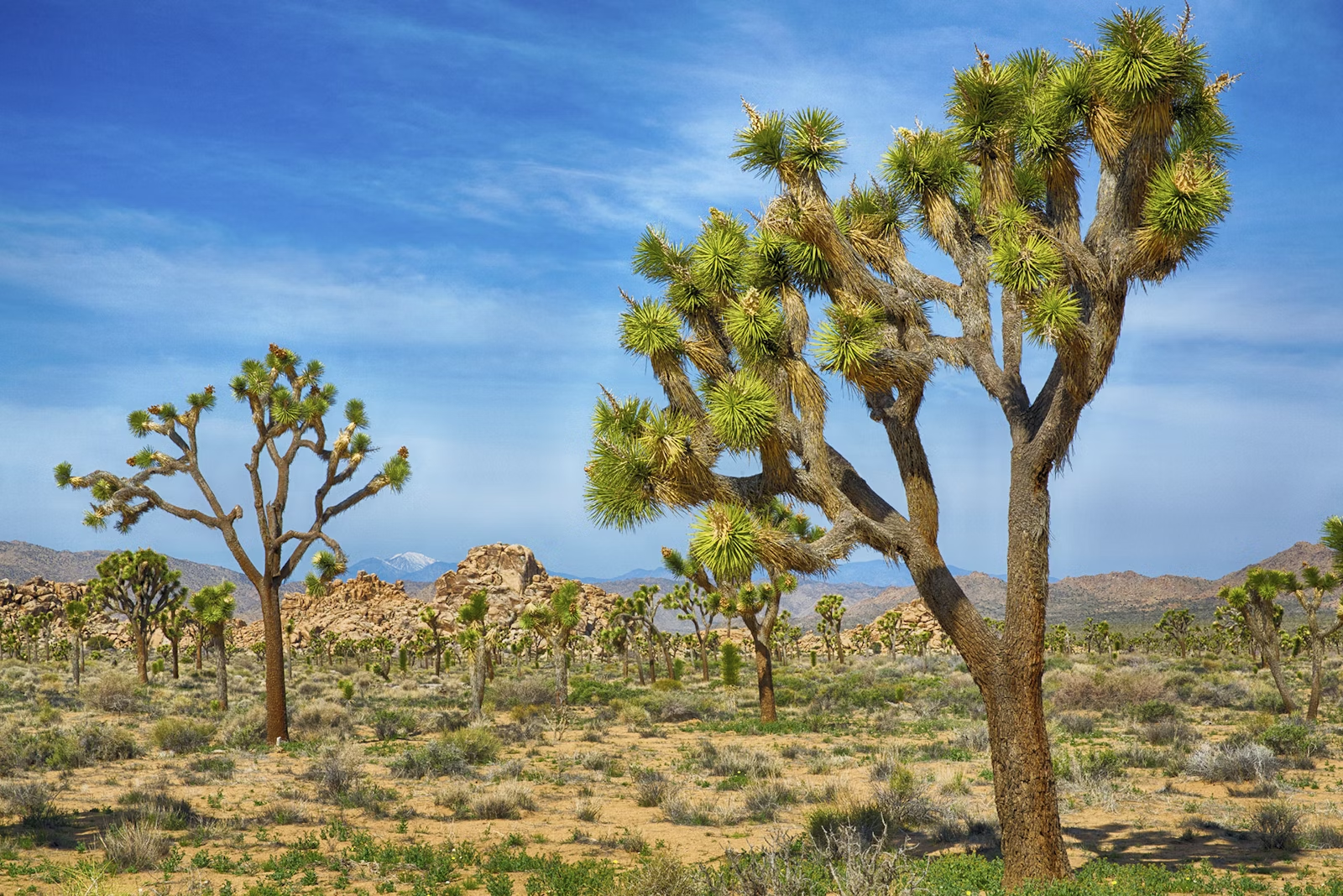
Location: Southern California.
Features: Joshua trees, desert landscapes, rock formations.
Joshua Tree National Park is one of the most iconic and visited places in California, known for its stunning desert landscapes and unique plants found nowhere else on Earth. The park was established in 1936 and covers an area of over 3,200 km², stretching across southeastern California at the junction of two large deserts, the Mojave and Colorado.
The park takes its name from the unique Joshua Tree plant, which is found only in the Mojave Desert. These trees, with their whimsical, carved shapes, have become a symbol of the American Southwest. The first Mormon settlers gave the plant the name “Joshua” in honor of the biblical hero Joshua, who they believed was pointing the way to the Promised Land with his hands raised.
Significance of Joshua Tree
- Ecological importance: These trees play an important role in the desert ecosystem, providing habitat for a variety of animal species such as desert hares and birds.
- Longevity: Some trees can live for more than 150 years, and their unique branching forms create impressive silhouettes against sunsets and sunrises.
Joshua Tree National Park is unique in that it encompasses two ecosystems, the Mojave Desert and the Colorado Desert, each with its own characteristics and flora.
- Mojave Desert: Located in the northern part of the park and is home to tree-like yuccas. The landscapes here are a combination of rocky hills and expansive plains, which are also home to cacti and other plant species adapted to arid conditions.
- Colorado Desert: In the southern part of the park is the lowland Colorado Desert, known for its cholla cacti and blooming desert flowers in the spring. The scenery here is more open and flat, and it contrasts with the rugged rock formations of the northern part.
Joshua Tree National Park is famous for its impressive rock formations and monoliths that attract rock climbing enthusiasts from around the world.
- Rocks and Monoliths: Granite monoliths carved by wind and water over millions of years create amazing shapes and structures. The most famous of these include Skull Rock, which resembles a giant skull, and Hidden Valley, which is surrounded by high cliffs and serves as a popular hiking and climbing destination.
- Rock Climbing: The park offers more than 8,000 climbing routes of varying difficulty levels, making it one of the best places for the sport in the United States. The season for rock climbing usually begins in the fall and lasts until spring, when desert temperatures are more comfortable.
Joshua Tree National Park is also home to unique geologic formations formed by tectonic processes and erosion over millions of years.
- Geologic Features: Massive granite cliffs and dome-shaped mountains are the result of magma cooling beneath the earth’s surface, which then eroded and rose outward. These granite formations are known for their smooth domes, cliffs, and peaks.
Despite the harsh desert conditions, the park is home to many species of flora and fauna adapted to the hot and dry climate.
Flora
- Cacti and Shrubs: In addition to Joshua trees, the park is home to species of plants such as cholla cacti, opuntia and fir. In the spring, after the rains, the park comes alive with the blooming of desert plants such as Indian paintbrushes and daisies.
- Desert Bloom: In some years, you can observe a “super bloom”, a rare and amazing natural phenomenon where after heavy rains, the entire desert is covered with a carpet of flowering plants.
Fauna
- Mammals: The park is home to coyotes, desert hares, rodents such as kangaroo rats, and less commonly seen mountain lions. It’s also home to the desert tortoise, a protected species.
- Birds and Reptiles: Joshua Tree is home to a variety of birds, including desert owls, hawks and quail. Reptiles often include rattlesnakes and lizards, which have adapted well to life in the hot environment.
Joshua Tree National Park offers many outdoor activities including hiking, camping, wildlife and stargazing.
Major hiking trails
- Hidden Valley Trail: This trail is about 1.6 km long and passes through a picturesque valley surrounded by cliffs. It is suitable for beginners and rock climbers alike.
- Barker Dam Trail: An easy trail of about 1.5 km that leads to a historic dam built by early settlers. In the spring, you can see desert blooms and a variety of wildlife.
- Ryan Mountain Trail: One of the more challenging trails that climbs to the top of Ryan Mountain. It’s a 5km round trip climb with beautiful views of the surrounding desert.
- Cholla Cactus Garden: This is a short walk through a field of cholla cacti on the south side of the park. This place is especially beautiful at sunset when the cacti glow in the setting sun.
The park offers many campgrounds, such as Hidden Valley Campground and Jumbo Rocks Campground, which are popular with backpackers and rock climbers. A night under the stars in the desert is an unforgettable experience, especially since Joshua Tree National Park is known for its clear skies and ideal stargazing conditions. The distance from major cities and the lack of light pollution make the night sky in the park crystal clear. Special events are held in the summer and fall where you can view celestial phenomena such as the Perseids meteor streams and the Milky Way.
The area where Joshua Tree National Park stands today was important to the Native American Cahuilla and Serrano tribes, who used desert plants for sustenance, tools, and medicines.
- Cultural Monuments: In the park you can find petroglyphs and archaeological traces of ancient cultures that testify to the presence of indigenous peoples on this land thousands of years ago.
- Gold Rush and Pioneers: In the 19th century, European settlers came to the region in search of gold and other resources. Traces of their stay, including abandoned mines and ranches, can be found in parts of the park.
The best times to visit Joshua Tree National Park are fall, winter, and spring (October through April), when temperatures are more comfortable for hiking and camping. In the summer, temperatures can rise to extremes, making hiking and outdoor activities less enjoyable.
6. Redwood National and State Parks
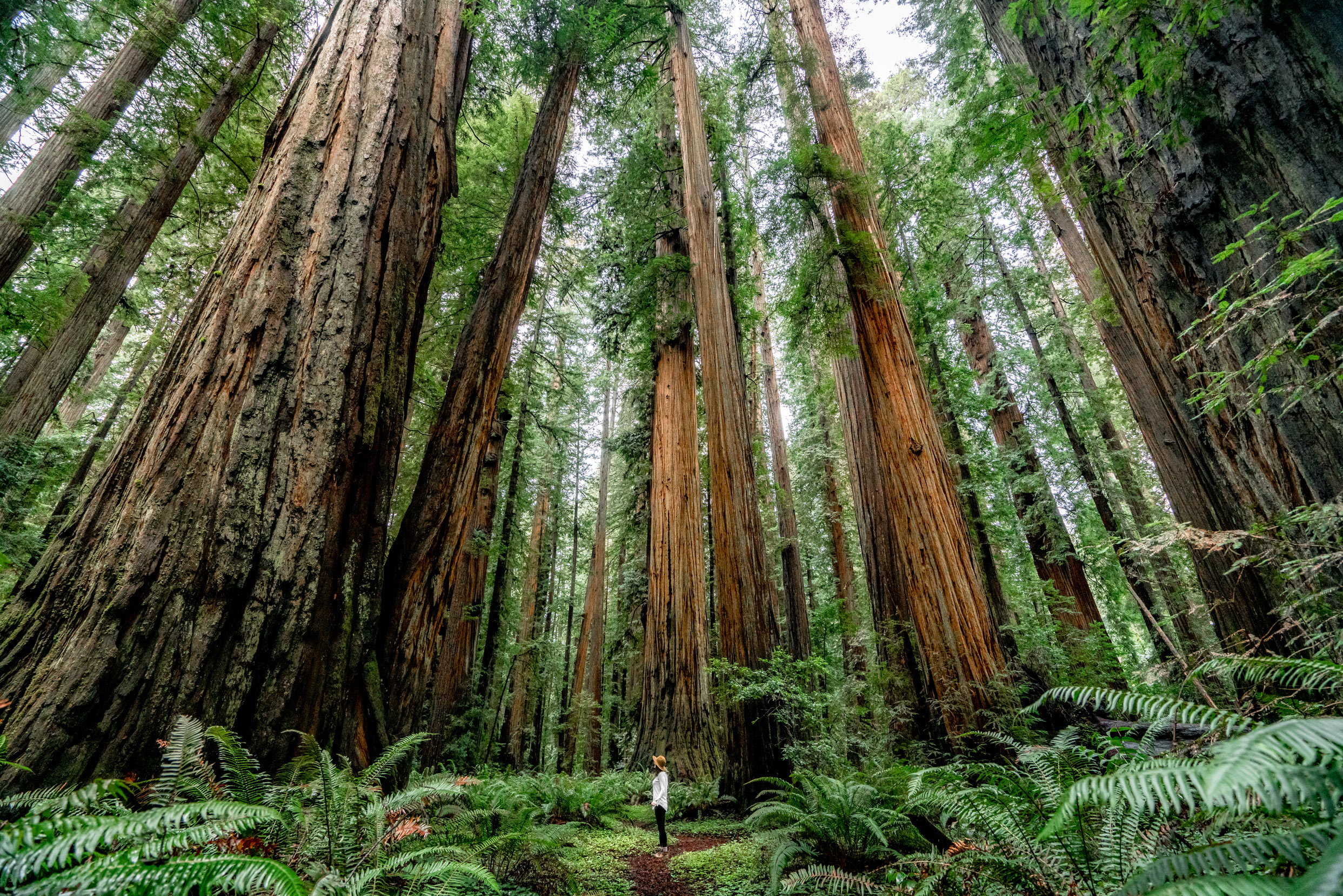
Location: North Coast of California.
Features: The tallest trees in the world – redwood trees, Pacific coast.
Redwood National and State Parks is a unique system of protected areas on the north coast of California, home to some of the tallest and oldest trees on the planet – sequoias (Redwoods). These parks cover more than 530 km², including not only sequoia forests, but also the Pacific coastline, rivers and prairies.
Sequoias are the tallest trees in the world, some reaching heights of over 100 meters, which is comparable to the height of a 35-story building. These giant trees can live for over 2,000 years, making them some of the oldest living organisms on Earth.
- Sequoia sempervirens: These are evergreen trees found only on a narrow strip of the Pacific coast of the United States, mostly in northern California. They can reach heights of over 110 meters and trunk diameters of up to 7 meters. Their bark can be up to 30 centimeters thick, which protects the trees from wildfires and other natural threats.
- Ancient Ecosystem: Sequoia forests create a unique ecosystem where many other plants and animals thrive under the shade of the giants below. Moisture from the dense fog that comes in from the Pacific Ocean contributes to a humid microclimate ideal for sequoias to grow.
Redwood National Park was established in 1968 to protect the remaining sequoia forests, which by then had been cut down by more than 90% for use in construction and manufacturing. The park system includes three California state parks, Jedediah Smith Redwoods State Park, Del Norte Coast Redwoods State Park and Prairie Creek Redwoods State Park . All work in conjunction with the national park to protect ancient forests and coastal areas.
The major parts of the parks system are
- Redwood National Park: The central part of the system, home to the tallest sequoias. The park includes both forested areas and coastal areas with cliffs and beaches.
- Prairie Creek Park: Known not only for its sequoias, but also for its extensive grasslands and dunes. Wild elk can also be seen here.
- Jedediah Smith: One of the most pristine corners of the park system, where the forests look as they have for thousands of years. The river of the same name also flows here, creating picturesque valleys.
- Del Norte Coast: A park that combines stunning sequoia forests with steep coastal cliffs and beautiful Pacific Ocean beaches.
In addition to the sequoias themselves, Redwood Parks is rich in a variety of flora and fauna adapted to the moist and shady conditions of the forests.
Flora
- Ferns and shrubs: Under the crowns of the sequoias grow dense carpets of ferns, mosses and shade-loving plants such as salal and rhododendrons, which fill the forests with bright colors in spring.
- Moss and lichen forests: The humid microclimate favors the development of lichens, which often hang from the branches of trees, giving the forests a mystical appearance.
Fauna
- Mammals: The parks are home to black bears, moose, deer, and numerous small mammals such as otters and bobcats. Roosevelt Elk (Roosevelt Elk), California’s largest mammal, are especially common in Prairie Creek Park.
- Birds: Redwood forests are home to many species of birds, including owls, hawks and woodpeckers. Rare northern spotted owls can also be found here.
- Marine Life: The coastal parks are home to sea lions, otters and whales that migrate along the California coast.
Redwood offers a wide range of outdoor activities for nature lovers, including hiking, camping, wildlife watching and walking along scenic coastal trails.
Main hiking trails
- Lady Bird Johnson Grove Trail: An easy trail of about 2.4 kilometers through dense sequoia forests. It is one of the most popular trails in the park, named in honor of the first lady of the United States, who played an important role in preserving the national parks.
- Prairie Creek Trail: This 6.5 km trail winds through the tallest forests of Prairie Creek Park. The trail loops among ancient trees and crosses small streams.
- Fern Canyon Trail: A unique route along a canyon where walls covered with dense ferns rise several meters up. This is one of the most scenic spots in the park, used in the filming of Jurassic Park 2.
- Redwood Creek Trail: This 25 km long trail leads to secluded areas with some of the tallest trees on the planet. A special wilderness camping permit will be required for this trek.
Redwood Parks has many campgrounds where you can stay for longer stays in the woods. The most popular campgrounds include Jedediah Smith Campground and Elk Prairie Campground. These are great places to enjoy nature and sleep under the stars surrounded by giant trees.
In addition to forests, Redwood National and State Parks include a long coastline with steep cliffs, rocky beaches and picturesque coves.
- Gold Bluffs Beach: This beach, with its long sandy strip, is a great place for walking and wildlife watching. Sea lions and otters are often seen here.
- Cape Mendocino: One of the most picturesque cliffs along the coast, offering magnificent views of the Pacific Ocean and dramatic rocky shores.
The area where Redwood Parks is located today was home to Native Americans of the Yurok, Tolowa, and Karok tribes. These peoples lived in harmony with nature, utilizing the resources of the forests and rivers for hunting, fishing, and building homes.
- Cultural Sites: In the parks, you can find archaeological artifacts and settlements that testify to the lives of indigenous peoples. Many tribal traditions and customs, such as wood carving and canoe making, are still preserved and passed down through generations.
- Protecting Cultural Heritage: Today, Redwood National and State Parks work in partnership with tribes to protect and restore cultural properties and areas that are important to Native peoples.
The best time to visit Redwood National and State Parks is during the summer and fall, when the weather is drier and trails are accessible for hiking. Spring is also a great time to visit when the forests come alive with spring rains and plant blooms.
Redwood National and State Parks is a unique place to experience the power and majesty of nature. Walking among giant sequoias, wildlife watching, scenic trails and secluded areas make these parks a treasure for nature lovers. Living near such natural wonders gives you a sense of harmony with the world and helps you realize the importance of preserving these ancient forests for future generations.
7. Channel Islands National Park
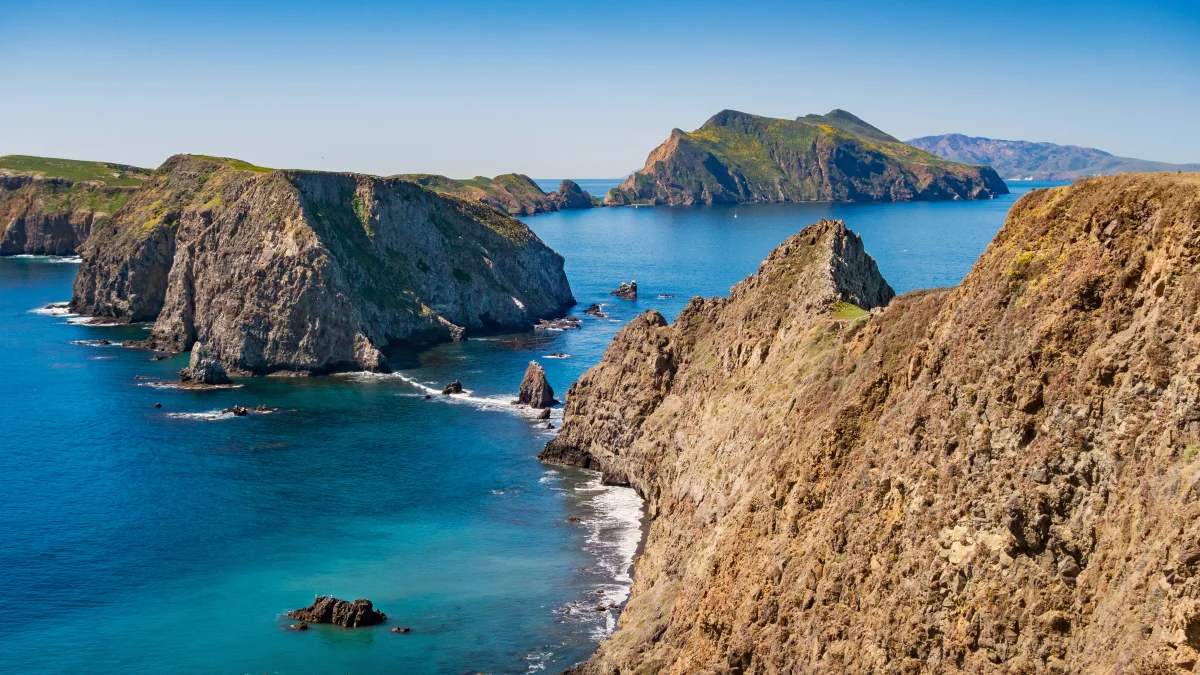
Location: Islands off the coast of Southern California.
Features: Picturesque islands, marine life, kayaking and diving.
Channel Islands National Park is an amazing natural treasure consisting of five islands off the coast of southern California. The park covers more than 1,000 km² of land and ocean waters, offering visitors a unique opportunity to enjoy wildlife and scenic landscapes far removed from the hustle and bustle of the mainland state. These islands are renowned for their biodiverse flora and fauna, many endemic species, and stunning marine recreation opportunities.
Channel Islands National Park includes five islands:
- Santa Cruz
- Anacapa
- Santa Rosa
- San Miguel
- Santa Barbara.
Each has its own characteristics and unique natural landscapes.
Santa Cruz Island
This is the park’s largest island and is known for its diverse landscapes, including steep cliffs, coves, mountains and expansive valleys. Santa Cruz Island attracts hiking, kayaking and camping enthusiasts, providing the perfect setting for a secluded vacation.
Anacapa Island
This small but picturesque island consists of three parts and is famous for its steep rocky shores and picturesque lighthouse. Anacapa is one of the best islands for bird watching and marine life.
Santa Rosa Island
The second largest island in the park offers spectacular views of rolling hills, canyons and sand dunes. It is also known for its rare plant species and inhabitants, such as the island fox and torreya trees that only grow here.
San Miguel Island
The most remote island that is famous for its vast fields of flowering plants in spring, as well as its rich marine life. It is home to sea lions, seals and various species of birds.
Santa Barbara Island
The smallest of the islands, Santa Barbara is a peaceful and tranquil place for those seeking solitude and a chance to enjoy nature away from the hustle and bustle.
The islands of the Channel Islands archipelago are known for their endemic plant and animal species, which are found nowhere else in the world due to their long isolation from the mainland.
Island Fox
The island fox is a miniature version of the gray fox that lives exclusively on the islands of the archipelago. The fox has adapted to the island environment and has become a symbol of the Channel Islands parks. Today it is protected as its population has been severely impacted by humans and predators.
The islands are also home to many unique plants, such as the island Torrey Pine, which is found only on Santa Rosa and San Miguel Islands, and rare species of wildflowers that bloom in the spring, creating colorful carpets on the islands’ hills.
The rich waters surrounding the islands support a huge variety of marine life, including sea lions, dolphins, whales and seals. The islands are located near the continental shelf where warm and cold ocean currents meet, making these waters particularly rich for life.
The Channel Islands are known for their spectacular sea caves, which can be explored by kayak or on guided tours. The most famous of these, Painted Cave on Santa Cruz Island, is one of the largest sea caves in the world. Its walls are covered with colorful lichens and minerals, creating a stunning visual effect, especially at sunset.
Channel Islands National Park offers many opportunities for outdoor activities. The islands attract both experienced hikers and novice adventurers.
The islands of the archipelago offer a variety of hiking trails, from easy walks along the coast to more challenging routes through hills and valleys. On St. Croix, for example, you can hike the Scorpion Canyon Loop, which offers spectacular ocean and mountain views.
Kayaking is one of the best ways to explore the islands’ coastal waters and sea caves. The water here is clear, making it ideal for snorkeling where you can see colorful fish, seaweed and other marine life.
In winter and spring, gray whale migrations can be seen in these waters, and in summer and fall, blue whales, the largest animals on the planet, can be seen here.
The Channel Islands are rich not only in nature, but also in cultural heritage. Archaeological findings indicate that the islands were inhabited more than 13,000 years ago by indigenous peoples such as the Chumash tribe.
- Ancient Artifacts: Some of the oldest artifacts in North America have been found here, including stone tools and settlement remains.
- Spanish Colonization: In the 16th century, the islands were discovered by Spanish explorers, which led to colonization and a change in the traditional way of life of the indigenous peoples.
Today, you can visit archaeological museums on the islands and see reconstructions of ancient dwellings and indigenous life.
You can visit the Channel Islands National Park at any time of year, but most interest is in the spring and summer when the weather is more stable and the water temperature is suitable for swimming and kayaking. There are also numerous whale watching excursions in the fall.
8. Pinnacles National Park

Location: Central California.
Features: Rock formations, caves, rare bird species (California condor).
Pinnacles National Park is a place that impresses with its bizarre rocky landscapes, deep gorges, and unique ecosystem. Located in central California, Pinnacles was formed by volcanic activity over 23 million years ago. It is a relatively small park, with an area of about 108 km², but with an extraordinary variety of natural forms, from high cliffs to caves, making it a favorite destination for hikers, climbers and wildlife enthusiasts.
Pinnacles National Park was formed by tectonic plate movement and volcanic activity that created its distinctive sharp rocky peaks and steep cliffs. About 23 million years ago, volcanic eruptions created a massive volcanic structure, some of which eventually moved hundreds of kilometers along the San Andreas Fault, which runs through the region.
- Rock Formations: The rocky peaks seen today are the remnants of an ancient volcanic complex. eroded by erosion and winds, they have been transformed into spectacular rock pillars and cliffs, which is the reason for the park’s name, Pinnacles (meaning “peaks” or “peaks”).
- Tectonic Activity: The park continues to be affected by tectonic plate movement, resulting in a gradually changing landscape.
One of the most unique features of Pinnacles National Park is Talus Caves, which were formed by the collapse of rocks that filled the gorges. These caves are important sites for exploring and observing wildlife, especially the colonies of bats that inhabit them.
Bear Gulch Cave and Balconies Cave
- Bear Gulch Cave: This is one of the most popular caves to visit and is closed at certain times of the year to protect the bats that live there. The trail through the cave passes through narrow tunnels and open spaces with small waterfalls, making it especially exciting for hikers.
- Balconies Cave: The second large cave in the park, located on the west side, offers a similar experience but with longer and more intricate trails. Passing through Balconies Cave requires flashlights and a willingness to be adventurous in the dark tunnels.
Pinnacles Caves offer a unique opportunity to explore the underground landscapes, cooled volcanic rocks and meet bats, the main inhabitants of these areas.
Despite its relatively small size, the Pinnacles are amazingly biodiverse. Plant and animal life is represented here in a wide spectrum – from rare flowers to birds of prey.
The park is located on the border of several biomes, which makes it possible to encounter both typical plants of desert climates and forests:
- Oak forests: Oak trees can be found on slopes and in valleys, which provide shade for numerous small plants.
- Chaparral: Dry and hot areas are covered with shrubs such as chaparral (hard-leaved shrub), mantania and sumac.
- Wildflowers: In spring, the Pinnacles transform into a vibrant field of flowers when numerous species of wildflowers such as poppies, lupines and Indian paintbrushes cover the valleys and hills.
The Pinnacles is home to many species of animals, many of which are rare or protected:
- California condor: The park is an important site for the reintroduction of this rare and endangered species. The California condor is one of the largest birds in the world with a wingspan of over 3 meters, and the park has programs to protect it and restore its population.
- Bats: The park’s caves are home to colonies of bats, including rare species such as the western long-eared bat.
- Mammals: The Pinnacles is also home to deer, coyotes, mountain lions and numerous small mammals such as squirrels, rabbits and foxes.
- Reptiles and Amphibians: The park’s reservoirs and rivers attract many species of reptiles and amphibians, including California red-legged frogs.
Pinnacles is a hiker’s paradise, offering a variety of trails for all fitness levels. You can choose from easy walks on scenic trails to more challenging rock climbs.
Popular Trails
- High Peaks Trail: One of the most scenic trails in the park, leading through high peaks and providing spectacular views of valleys and craggy peaks. This trail is considered medium difficulty, with some steep climbs and narrow trails.
- Bear Gulch Reservoir Trail: An easy trail leading to the beautiful Bear Gulch Reservoir. This is a great place for picnics and bird watching.
- Condor Gulch Trail: This trail is known as one of the best places to see California condors in their natural habitat.
The rock formations of the Pinnacles make it a popular destination for rock climbers. The many routes of varying difficulty levels attract beginners and experienced athletes alike. Especially popular are the routes on the west side of the park, where the rock formations provide excellent climbing conditions.
There are two main campgrounds in the park, Pinnacles Campground on the east side of the park and several smaller wilderness campgrounds. These are great places for those who want to spend a night under the stars surrounded by natural beauty.
The area where Pinnacles National Park is located today has been inhabited by Native Americans since ancient times. Hunters and gatherers, such as the Olonjo tribe, used the area to hunt and gather plants. The park is also significant as part of California’s colonization history.
- Indigenous Peoples: Archaeological findings in the park indicate that Native Americans lived in the area thousands of years ago, using native plants and animals for survival.
- Settlements and Farms: In the early 20th century, the area was settled by farmers and herders who used the land to grow crops and graze livestock.
The Pinnacles are best visited in the spring and fall when the weather is most favorable for hiking. In the summer, temperatures can rise to very high levels, making hiking less comfortable. Spring is also an ideal time to see the plants in bloom.
9. Mojave National Preserve
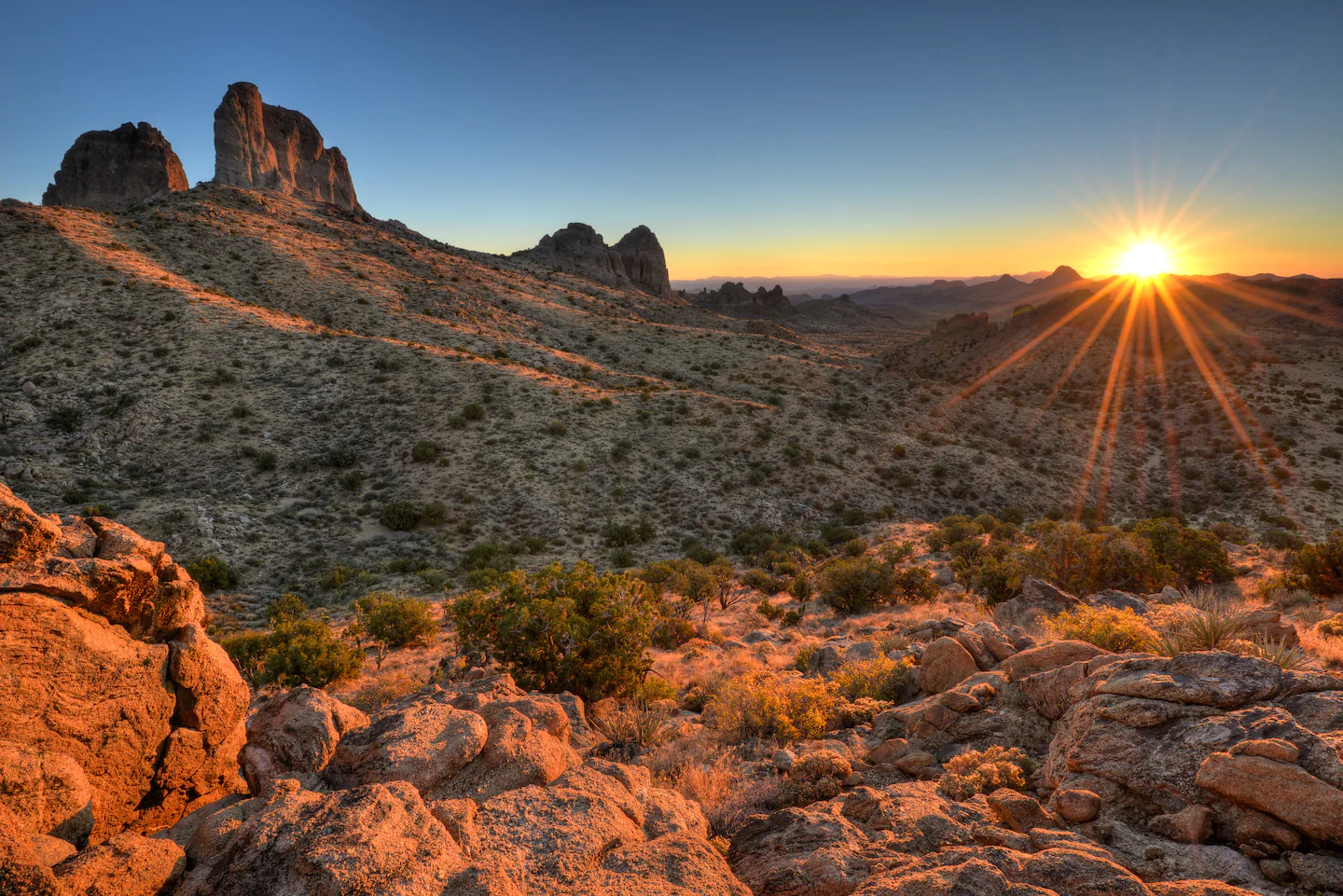
Location: Eastern California.
Features: Sand dunes, volcanic craters, and a variety of desert landscapes.
Mojave National Preserve is a vast natural area located in southeastern California, between Los Angeles and Las Vegas. The reserve covers an area of more than 3.2 thousand square kilometers and represents one of the most picturesque and diverse ecosystems of the Mojave desert region. It offers magnificent scenery, unique geological formations and rich flora and fauna that make this reserve an ideal destination for nature lovers and outdoor enthusiasts.
The Mojave National Preserve is known for its variety of landscapes, from high mountains to lowlands to deserts. Key natural features of the Preserve include:
- Mountains and Plateaus: The Preserve includes many mountain ranges such as the Castle Mountains, Black Mountains, and Red Mountains. These mountains provide excellent opportunities for hiking and wildlife watching.
- Deserts and Dunes: The Mojave is also known for its sand dunes, especially in the Caves area, where you can see scenic desert landscapes covered with diverse vegetation and unique landforms.
- Cactus Landscapes: The Preserve is home to several species of cacti, including the famous tree cactus, which has become a symbol of the region.
The Mojave Preserve is rich in diverse ecosystems and is home to numerous species of plants and animals, many of which are endemic to the region.
- Tree Cacti (Joshua Trees): This species of cacti, which resemble small trees, grows in extensive numbers in the Preserve and is one of the symbols of the Mojave Desert.
- Cacti and Succulents: The Mojave is also rich in various species of cacti, including barrel cacti (barrel cacti ) and prickly pear cacti (prickly pear).
- Variety of flowers: In spring, the desert comes alive with the blooming of many wildflowers such as poppies and early bloomers, creating colorful fields against the desert landscape.
The Mojave Preserve is inhabited by a variety of animal species including:
- Mammals: A variety of mammals such as foxes, rabbits, deer and mountain lions can be found in the preserve .
- Birds: More than 200 species of birds inhabit the reserve, including the California condor and cardinal.
- Reptiles and Amphibians: The Mojave is also home to many species of lizards, snakes and lizards, including the California kingsnake and rattlesnake.
The Mojave National Preserve also has a rich history associated with indigenous peoples and European explorers.
- Indigenous Peoples: The Mojave was inhabited by indigenous peoples such as the Kawaiisu and Mojave tribes. They utilized the resources of the desert for their survival by gathering plants and hunting wildlife.
- Gold Rush: In the late 19th century, the reservation became famous for the gold rush, when many fortune seekers sought to find gold in this desert area. Some of the old mines and shafts can still be seen in the preserve.
- Historic Trails: The preserve includes part of the historic Old Spanish Trail, which was used for trade between California and New Mexico.
Mojave National Preserve offers many opportunities for outdoor activities and exploration.
The preserve has a variety of hiking and hiking trails:
- Hiking Trails : Mojave has many trails of varying difficulty. For example, the Mojave River Trail is an easy walk along the river where you can enjoy scenic views and bird watching.
- Mountain Climbing: More experienced hikers can try their hand at more challenging trails, such as the Summit Trail, which leads to the top of the mountains and offers spectacular views of the surrounding area.
There are several campgrounds in the preserve where campers can pitch tents and enjoy a night under the stars. Some of the most popular campgrounds include Hole in the Wall Campground and Kelso Dunes Campground. These campgrounds provide easy access to hiking trails and scenic areas.
Because of the lack of light pollution, the Mojave Preserve is the perfect place for stargazing. Each night, the sky is filled with millions of stars, and the Milky Way and various astronomical objects can be seen.
The climate in the Mojave National Preserve is desert-like, with hot summers and mild winters. Summer temperatures can reach 38-40°C (100-104°F), while winter temperatures can drop to 0°C (32°F). The best times to visit are spring and fall, when the weather is most comfortable for outdoor activities and exploration.
10. Kings Canyon National Park

Location: Central California, next to Sequoia Park.
Features: Deep canyons, rushing rivers, giant trees.
Kings Canyon National Park is one of the most scenic and unique natural areas in California. Located in the central part of the state, near the famous Sequoia National Park, Kings Canyon is known for its deep canyons, majestic mountains and giant sequoias that make it an ideal destination for nature lovers and outdoor enthusiasts.
King’s Canyon National Park covers an area of about 1,700 square kilometers and features a variety of natural landscapes:
- Deep Canyons: The park is famous for its famous Kings Canyon, which is one of the deepest and most majestic canyons in the United States. Its height reaches over 1,200 meters and the canyon walls rise vertically upwards, creating breathtaking views.
- Mountains and Ranges: The park is located in the Sierra Nevada and is home to high mountain peaks including Tooth of Time Peak and Whitney Peak. The mountains are covered with coniferous forests and alpine meadow ecosystems.
- Giant Sequoias: Kings Canyon is also known for its giant sequoias, which are considered some of the largest trees on the planet. These impressive trees can reach heights of over 85 meters and are over 2,000 years old.
Kings Canyon National Park is rich in diverse ecosystems and is home to many species of plants and animals.
- Sequoias: Giant sequoias grow at altitudes of 1,500 to 2,400 meters and form unique forests that are important to protect and study.
- Coniferous forests: In the higher areas of the park, pine trees such as White Pine and Yellow Pine can be found, which create beautiful green landscapes.
- Alpine Meadows: In the higher regions of the park there are alpine meadows, which in spring are covered with a variety of wild flowers such as lupines and orchids.
The reserve is home to many species of animals:
- Mammals: A variety of mammals can be found here, including deer, black bears, coyotes and mountain lions.
- Birds: King’s Canyon is a birdwatcher’s paradise as it is home to many species of birds including hawks, sparrows and rare canaries.
- Reptiles and Amphibians: The park is also home to various species of lizards and snakes, as well as amphibians such as frogs and salamanders.
Kings Canyon National Park has a rich history associated with both indigenous peoples and European explorers.
- Indigenous Peoples: Before the arrival of Europeans, the area was inhabited by indigenous peoples such as the Nusene and the Wiyot Waiyo. These tribes utilized the resources of the region for hunting and gathering.
- Exploration and colonization: In the 19th century, with the arrival of European settlers, active colonization of the region began. Local resources, including trees and mineral wealth, attracted the attention of explorers and entrepreneurs.
Kings Canyon National Park offers many opportunities for outdoor activities and exploration.
The park offers a variety of hiking trails ranging from easy to challenging:
- Hiking Trails: Some of the most popular trails include the Mist Falls Trail and the Zumwalt Meadow Trail, which offer spectacular views of canyons and giant sequoias.
- Challenges for experienced hikers: More challenging trails such as Cedar Grove and Rae Lakes Loop offer opportunities to enjoy more remote parts of the park and scenic mountain lakes.
There are several campgrounds in the park where campers can pitch tents and enjoy a night under the stars. The most popular campgrounds include Cedar Grove Campground and Dodge Ridge Campground. They provide easy access to hiking trails and scenic areas.
Kings Canyon is a great place for wildlife viewing. Here you can see various species of animals in their natural habitat. The park also offers guided tours and conservation related programs.
The climate in Kings Canyon National Park varies depending on the altitude. Summer temperatures can reach 30°C (86°F) in the lowlands, while temperatures can be much lower in the mountains. In winter, temperatures can drop below freezing, especially in the mountainous areas. The best time to visit the park is spring and fall, when the weather is most comfortable for outdoor activities.
Conclusion
Moving to California provides not only access to innovation and technology, but also the opportunity to live near some of the world’s most amazing natural wonders. These 10 national parks showcase the diversity of the state’s natural landscapes, from giant trees to desert dunes, from mountain peaks to the Pacific coast. Whether you’re looking for outdoor adventure or peace in the bosom of nature, California offers something unique to everyone.
Our moving company is ready to assist you with your move, providing a professional approach every step of the way.
Contact us in any way:
Telephone: (888) 282-6940



